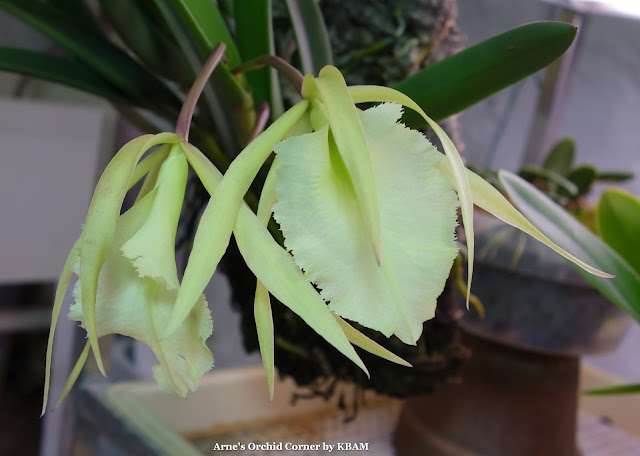 |
Vanda testacea
|
A new orchid in our collection, Vanda testacea, with flowers about 1.5 cm. Found in Sri Lanka, throughout India and up to the Himalayas. Here is a paragraph that Arne put together about this orchid.
"Vanda testacea has among the smallest flowers of all Vandas. It is widespread from Sri Lanka through the south of India up to the Himalayas in the north and is also found in Bhutan and China. It has very well-shaped yellow flowers with a more or less blue/purple lip. We have two clones, one is slightly older and seems to be a weaker grower, its flowers are very brightly yellow although the lip is lacking the sharp contrasting blue color. The younger clone is line bread from selected parents which is manifested in its vigorous growth and in the flowers having the contrasting blue lip. V. testacea needs very bright light to grow well – full morning sun until noon works perfectly well. It is normally considered a temperate growing Vanda but I find it very tolerant of our hot Baltimore summers. Maybe that is not so strange considering its geographic spread in South East Asia." By Arne.
 |
| A) June 25th, 2017. Buds appearing. |
 |
| B) An individual flower up close. |
 |
| C) Flowers in full bloom outdoors by July 4th. |
 |
| D) July 4th, next to our orchidarium. |
 |
| E) Enjoying the warm Baltimore summer today, July 9th. |
Until my next post, have a good week everyone!

























